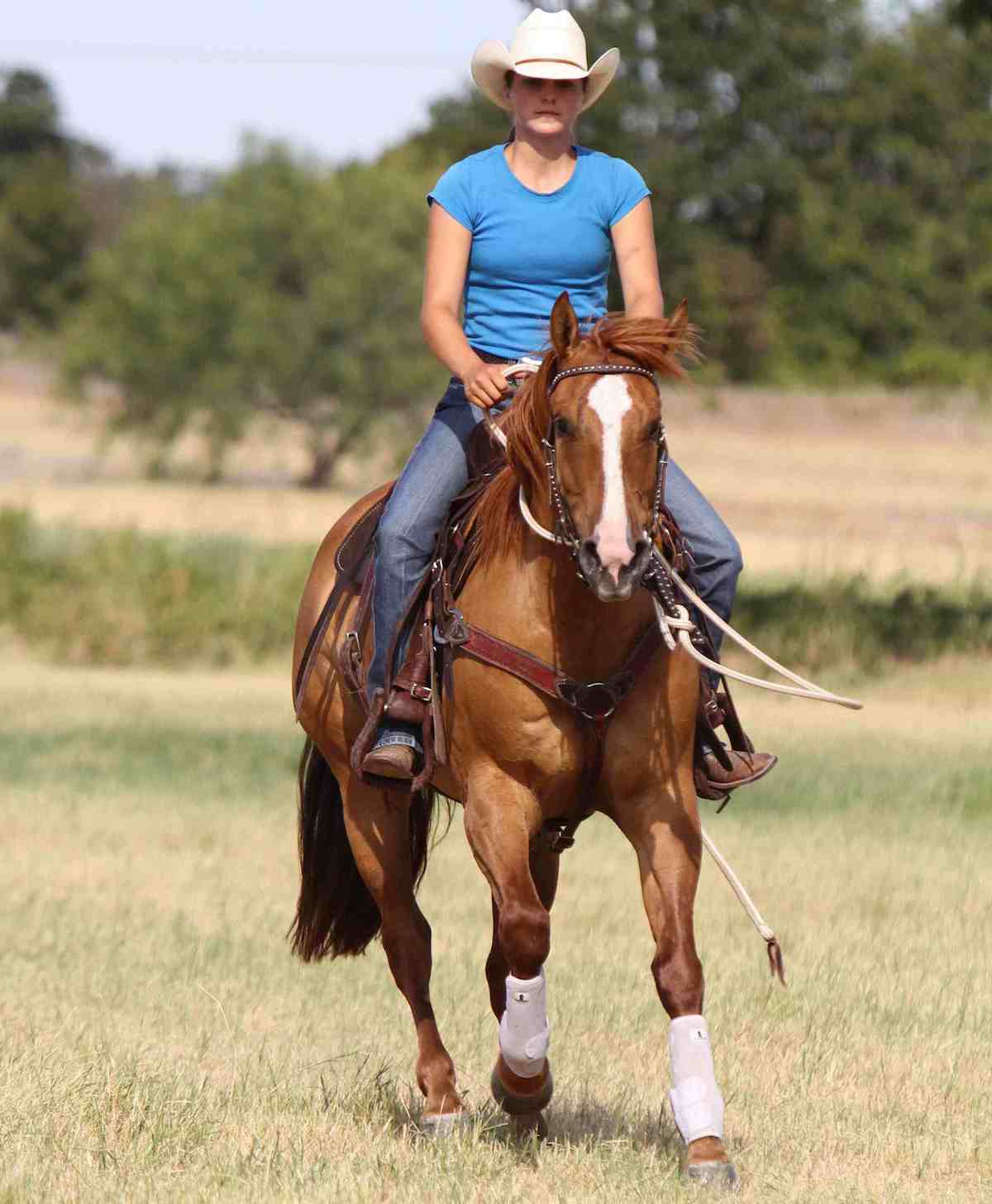You thought his disposition and level of training were just right for you. But soon you began to feel nervous on him, especially at the lope. You realized you could probably do a lot of groundwork and mounted exercises that, over time, would help him be more responsive and you feel more comfortable.
But…you thought this one was “ready to ride”!
What went wrong?

Getting expert help whenever you acquire a new riding horse is always your safest bet. But when you’re working on your own, there’s one strategy you can use to test in advance that you’ll feel truly comfortable on a horse.
It’s simple and straightforward, but a lot of people don’t do it.
It’s loping the horse. A lot.
What usually happens instead is you watch the owner ride the horse, including at a lope, but when it’s your turn to try him you spend most of your time at a walk and trot. You lope just a few strides each way of the arena.
“Seems OK,” you say to yourself. “This is plenty until I get him home.” You think this way because you’re a bit nervous riding him, you’re sure you’ll feel better at home in familiar circumstances, and—perhaps subconsciously—you want to quit before something goes wrong.
Because you already love the horse, and don’t want anything to scare you away from him.
This isn’t uncommon.
“You wouldn’t believe how many people don’t lope a horse before buying him,” says Clinton Anderson, who adds that loping is critical “not just to see how he goes, but also to evaluate his overall training, willingness, and temperament.”
The clinician, who’s had lots of experience helping people with horses they’re afraid of, explains why loping is THE key measure.
“Most horses feel some obligation to at least walk and trot, and will do so without much backtalk. It’s when you ask them to canter that chinks in their training—or any latent naughtiness—is likely to come out.”
And if it is going to come out, don’t you want to know that before you buy?
Of course you do. Here’s the ideal sequence for trying a prospect to make sure you’ll feel comfortable riding him once he’s yours:
1. Watch the owner lope the horse, on a loose rein if possible. (And if the owner won’t lope the horse, that’s a deal-breaker.)
2. Lope the horse yourself in an arena where you feel safe. Spend time at it. Note whether he quietly and correctly picks up his leads. Put some slack in the reins and see how he reacts. Go three, four, five times around each direction, giving him a chance to do whatever he’s going to.
Does he keep motoring along at the same speed on a loose rein until you cue him otherwise? Or does he start to gain speed or get hot and nervous? He may not perform perfectly, but how well does he do, and how do you feel on him?
3. If he feels great to you loping in the arena, ask to try him somewhere outside. If need be, have the owner find another horse so the two of you can go on a little trail ride and find a safe spot for a stretch of loping. Obviously, this is especially important if you intend trail ride on this horse. But even if not, it’s a superb advanced test of his temperament and training.
“A lot of horses act much differently away from home than they do in their familiar stomping grounds,” says Clinton. (And, of course, if you don’t feel safe loping the horse outside, don’t do it…but accept that as a serious don’t-buy signal.)
4. If the outside ride goes well—and even if it went perfectly–plan to come back one or two more times to do it all again, to check for consistency. Then, if you can talk the owner into letting you take the horse home on a short trial, better still. During that trial, do a lot of…you guessed it…loping.
If you lope the horse this much before deciding to take him, you’ll be as close as possible to knowing you’ll feel comfortable riding him. Of course, the catch-22 is that the riders most likely to neglect all this loping are the ones who most need this he’ll-work-for-me assurance.
If you don’t feel up to loping strange horses this much, reconsider your buying plans. You may be better off working with an instructor to ride as many school horses as possible before you buy your next mount.
The end result—a horse you feel fabulous on—will be well worth it.
The right horse equals a good match.




